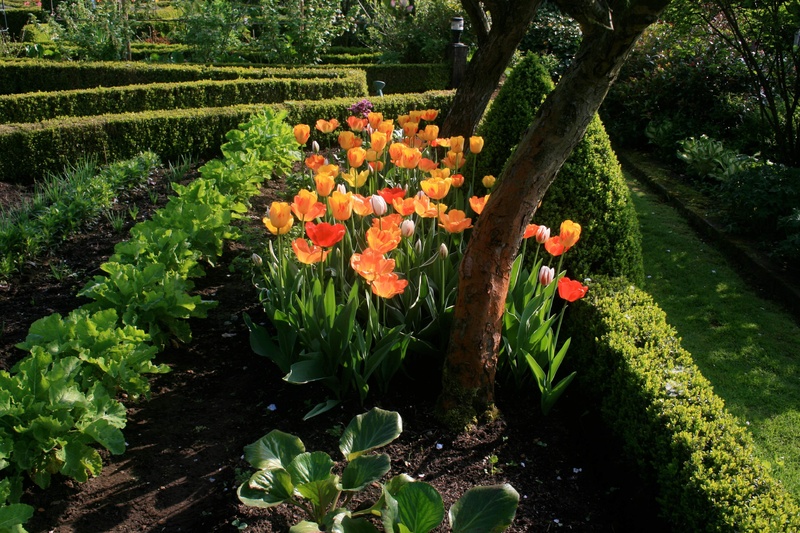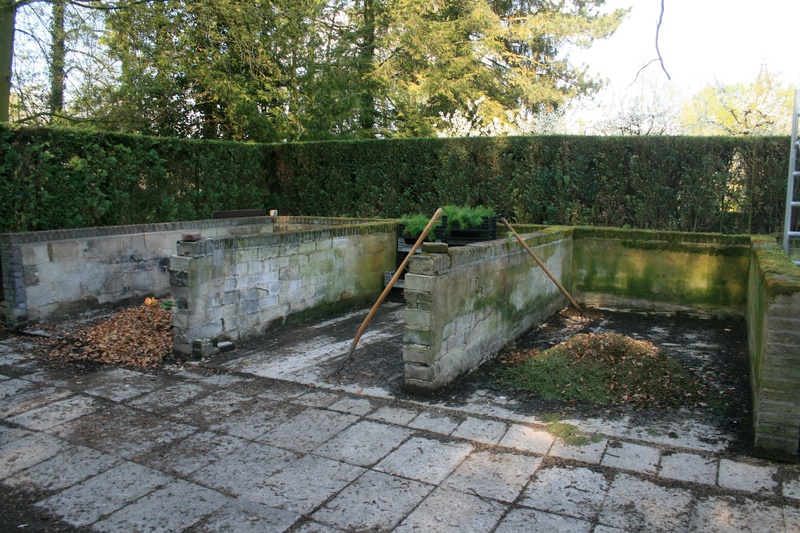Good fences do make good neighbors, especially if you like hanging out with the wildlife crowd. The right collection of trees and shrubs adds long-term interest and privacy, while providing cover for birds, pollinators and other wandering critters.
Decide what it is that you want from a living fence and then select some flowering shrubs (lilacs, quince, weigela), deciduous bushes (barberry, burning bush, spirea) or evergreens (arborvitae, boxwood, yews) to accomplish it.
All provide a different look or serve a different purpose, from security to nourishment to sound abatement. And there’s nothing wrong with blending varieties or even incorporating them into standard fencing.
“Diversity of species is good insurance against devastation by pests, including insects, disease and mammalian,” said Barbara Bates, a horticulturist with the Kane County office of University of Illinois Extension.
“Multi-purposing plants” also give you more bang from your landscaping buck and labor, she said. “There are many fruiting shrubs and dwarf trees that will provide food for family, friends and wildlife. Those that have displays of bloom, fragrance and fall color can add a seasonal dimension of change to your landscape.”
Hedges are used primarily for creating property borders, establishing visual screens and directing traffic flow.
“Fences are faster than hedges and serve the purposes equally well. (But) for plant people who root themselves in their garden abodes, the era of hedgerows continues,” Bates said.
Hedges are practical, with tree and shrub barriers tending to outlast fences, said Michael Kuhns, an extension forester with Utah State University at Logan. They also act as windbreaks and protected spaces where animals, songbirds, game birds and pollinators shelter.
“You can use these barriers, especially the taller ones, to create microclimates,” Kuhns said. “Certain fruits and garden vegetables are pollinated better where the wind isn’t blowing, increasing production. Fruit quality is enhanced, too, because there’s less ‘rub.’“
If it’s a wildlife hedge you’re after, then stay away from high-maintenance shrubs such as formalized boxwoods or tightly groomed topiaries.
“Some things are traditionally clipped but don’t have to be,” said Sharon Yiesla, a horticulturist with the Lake County Unit of University of Illinois Extension. “That’s especially the case with many of the flowering plants popular with pollinators. All you do when you trim is remove the flowers and follow-on food sources for birds. It’s better just to leave them alone and let them go natural.”
Many old-fashioned shrubs that have fallen out of favor have worked well as hedges. Aromatic and long-blooming rugosa roses, for example, grow quite large, although a few of the newer hybrids are smaller.
“The rugosas produce fruit in the form of rose hips late in the season,” Yiesla said. “They also provide nice fall colors — yellow leaves mixed with orange. Another plus is that they have good disease resistance. They’re rugged plants.”
So rugged they may be considered invasive in some areas. Check with your county extension office to be sure.
Thorny shrubs make useful barriers but require careful consideration when deciding location.
“Whenever you plant anything, you have to be thinking about property line issues,” Yiesla said. “Set them (thorny roses) far enough back that they won’t be a problem for neighbors, particularly those with small children.”
Install a fence if low-maintenance landscaping is a priority. Shrubs and trees can be sizable investments requiring a great deal of commitment.
That’s part of being a gardener, though, said B. Rosie Lerner, a horticulturist with the Purdue University Cooperative Extension Service.
“You’ve got to enjoy that kind of maintenance.”
Send questions/comments to the editors.




Success. Please wait for the page to reload. If the page does not reload within 5 seconds, please refresh the page.
Enter your email and password to access comments.
Hi, to comment on stories you must . This profile is in addition to your subscription and website login.
Already have a commenting profile? .
Invalid username/password.
Please check your email to confirm and complete your registration.
Only subscribers are eligible to post comments. Please subscribe or login first for digital access. Here’s why.
Use the form below to reset your password. When you've submitted your account email, we will send an email with a reset code.